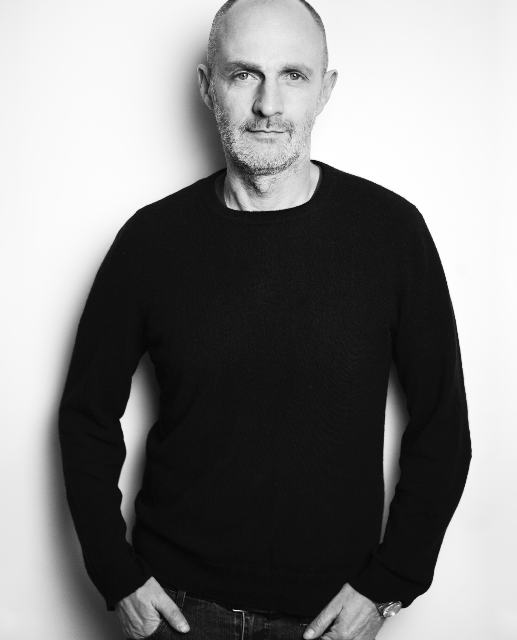The 5 Digital Trends That Matter In 2020
It’s funny how wide the gulf is between December and January. The final month of the year is often spent looking back, analyzing the good, the bad and the ugly, trying to predict what will come next, whilst in January we regularly yo-yo between being overly enthusiastic and looking shell shocked. New years are like that, but 2020 is more special than most; it’s a new decade, which means we all need to redouble our efforts to forecast far into the future to see what lies ahead.
As much as I’d like to declare myself the ‘Digital Oracle’ when it comes to the big trends shaping media today, much of what we see now is an evolution of the changing landscape. The digital media machine has been transforming at a rapid rate for the past 10 years, with video fast becoming the centrepiece for generating consistent engagement and a decent ROI.
Clearly this isn’t exactly new news. We currently spend some 84 minutes a day consuming video content online and according to Cisco, by 2022 video content will account for 82% of all online content – so yes, this is not a medium we can afford to dismiss lightly. There’s always a knowing smirk whenever marketers declare that ‘video is the future’ but given these figures and the growing popularity of platforms like TikTok edging it further up the priority list, I’d say video is firmly for the here and now as well.
Of course, video is only a part of the larger digital media story. Granted, it’s a fairly big piece of the puzzle, but there are other factors at work when it comes to deciding our priorities for the coming 12 months. So, with this in mind, here’s my take on what I think will be important for digital media in 2020…
1. Lights, Camera, Action!
It won’t come as a shock to anyone that video content is rising up the ranks in terms of importance, winning the hearts and minds of advertisers and consumers alike. It’s already a medium we’re spending vast amounts of time and money on, with Zenith forecasting online video ad spend to reach $61 billion by 2021.
World domination sounds inevitable doesn’t it? What will be interesting to see is how platforms adapt to this, pivoting to focus more on long and short form video content as standard, and not as an afterthought. TikTok has a huge advantage here given it started life as a video platform and will continue to capture market share on a global and regional level in 2020, leaving the likes of Facebook and Instagram playing catch up.
We saw last year how TikTok created a much-needed point of difference to the online filtered reality we had become accustomed to, highlighting a growing trend for creative expression that focuses on users, and it is this ‘unpolished’ approach that will influence future brand content.
Advertisers will now have to think both mobile and video-first when it comes to executing their campaigns, which will prove a game changer over time. And, as we all get more comfortable becoming amateur videographers, shooting quick and unedited content on our smartphone, the raw, unfiltered look will grow even further in popularity, challenging the influencer dominance still present across most digital mediums.
2. Playing The Influencer Game
Speaking of influencers…this kind of content has almost done a 360 in terms of how we have come to view it. Once upon a time it was the golden goose of marketing, only to be challenged and criticized for lack of transparency in measurement and effectiveness, landing to where we are today; influencers are accepted, but with conditions.
Given that this is a global industry said to be worth $8bn and growing, it’s clear that influencer marketing is going nowhere anytime soon, with brands keen to invest in the right kind of people. In 2018 there were 3.7million brand-sponsored influencer posts on social media and that number looks set to almost double this year.
Transparency has been the buzzword of the digital advertising space for the past few years and this extends to the influencer market too; everything must be upfront and tagged as a paid promotion or advertisement if they are to get user buy-in and earn their trust.
Brands in response are now shifting their strategies to work with a range of niche influencers that will resonate more with their target consumer, aiming to make an authentic connection above all else. This is part of a broader trend too; the move to relevancy over reach – it’s no good hitting loads of eyeballs if they’re not the right ones.
On the back of more influencer guidelines and accountability, I predict we’ll also see a rise in User Generated Content (UGC) appear in the marketing mix as standard. Anyone can now create content, be it written, visual or video through a touch of a button, so why not leverage this potential to create a viral campaign? We’ve seen it take off with YouTube in the past (cat videos, anyone?) or more recently though user-created filters on Instagram (I’m the Genie from Aladdin, how about you?) and of course, moving to TikTok, where the focus from day one was on real people, AKA, the ‘content creators’ of tomorrow. In 2020, we’ll see social media, and in particular platforms like TikTok, become more & more widely utilized by everyone, experimenting for fun whatever their age.
3. The Rise & Rise Of Social Commerce
Last year was where social commerce really started to gain traction, with platforms like Facebook, Instagram and Pinterest linking awareness and consideration with the actual conversion. Since the explosion of social media, brands have been looking for a way to embed their products into a narrative, easing the consumer in with creative posts that have a shoppable element; in other words, an ad that isn’t an ad.
If the goal is to engage with consumers on a platform and device that makes sense to them, then this could be the year that we see conversions start to happen in a big way through mobile. According to data from eMarketer, in 2020 the time spent on these devices will surpass time spent watching television, with social media referral traffic growing over 100% in the last two years – more than any other channel; if that isn’t a clear signal that we need to pay attention to the power of social mobility, then I don’t know what is.
As online platforms begin to up their presence on key social channels, adding exploration and entertainment into the mix, brands will be able to deliver a more seamless and integrated experience overall, especially as visual search increases in popularity. From a business perspective, this new layer to social media helps underscore its value to the C-suite decision-makers, showing them how spending on these channels can generate leads and increase sales too.
4. Say Hello To Elevated AR/VR Experiences
There’s the filtered reality of carefully edited images and then there’s a different kind of reality that cleverly merges a fantasy with our real life, making the online experience that much more enjoyable. Whether it’s Augmented, Virtual or Mixed Reality concepts, last year we saw this technology really begin to take off as brands leveraged custom filters and digital-heavy campaigns to place ‘the experience’ at the heart of their engagement and retention strategies.
AR resurfaced, at least as far as the newer generation were concerned, within the gaming world thanks to the popularity of Pokémon Go, but it’s also now a very credible means to reach your consumers on various levels. Fun filters can go viral in seconds, but don’t discount how this technology can be useful too.
Take IKEA’s AR-enabled app that allows consumers to ‘place’ furniture directly in their living room, giving a whole new meaning to ‘try before you buy’, or how about TikTok’s Diwali campaign? Successfully merging the online and offline experience, the platform gave its users a way to record interactive greetings in a mall setting, customize with different effects and then share to their network and family members.
As this kind of technology becomes more widely available and adoption increases, we’ll see more ‘one-off’ experiences like this pop up, largely guided by social trends, as creativity shifts up a gear with 5G enabling fast, fearless and on-the-go campaigns to be enjoyed at a time and place of a consumer’s choosing. By 2025, Statista estimates that the AR market size will be worth $198bn – so if you don’t already have plans for this, I’d suggest now is the time to make some inroads in understanding what this technology has to offer.
5. Brand Voice 2.0
Try not to roll your eyes when I say this one word: purpose. I hold my hands up that this is so overused in brand communication today, almost eclipsing everything else that the industry stands for. Let me break it down. In the race to appear ‘conscientiously conscious’ (go on, try saying that 10 times) about everything that matters to the consumer today, brands have almost unwittingly backed themselves into a corner, trying to instil a sense of identity, and yes, purpose to set them apart from their competitors.
Here’s the thing though, if you try to latch onto the latest trend without context, consumers will waste no time in calling you out publicly. Instead, brands need to rediscover their voice to cut through the clutter, producing content that is appealing, useful and engaging. Sounds easy right?! In essence, consumers don’t want convoluted campaigns.
They don’t want to be preached or talked down to and they don’t want to be underestimated either – in short, they want something authentic and real. Brands have the unenviable job of balancing long-term loyalty with ‘in the moment’ quick wins that connect with users at any given time. To do this, they’ll need to listen to their audience, anticipate their needs and then create tailored 1-1 messaging that will resonate. The technology that will truly enable this kind of personalization is coming, giving brands the key to unlocking sustained success built on an authentic offering.
So, there you have it – my view in a nutshell, and full disclosure here: I’m not claiming to be a fortune teller of any kind, gifted with foresight on what will be an absolute certainty for years to come. Ultimately though, we live in a perfectly imperfect world and If we could accurately predict everything that’s ahead then we’d be laughing, but then again… where would the fun in that be?





